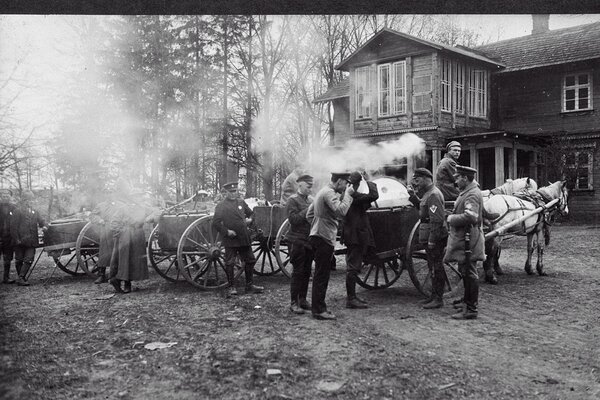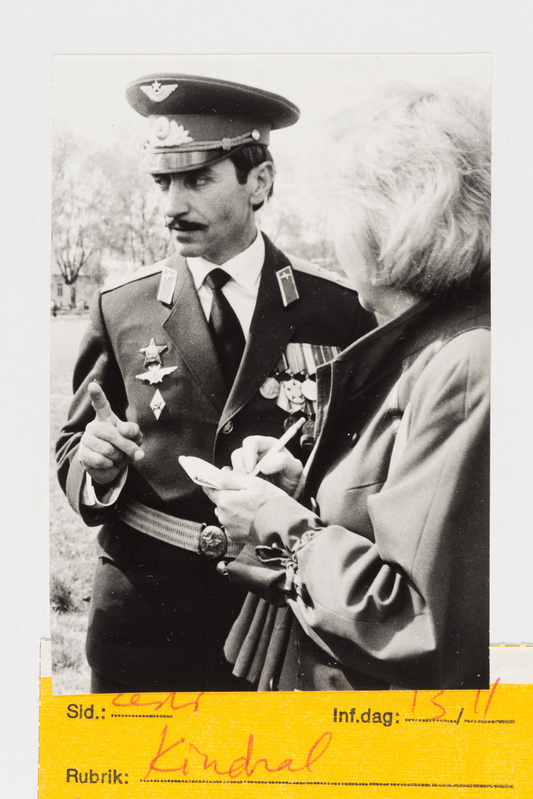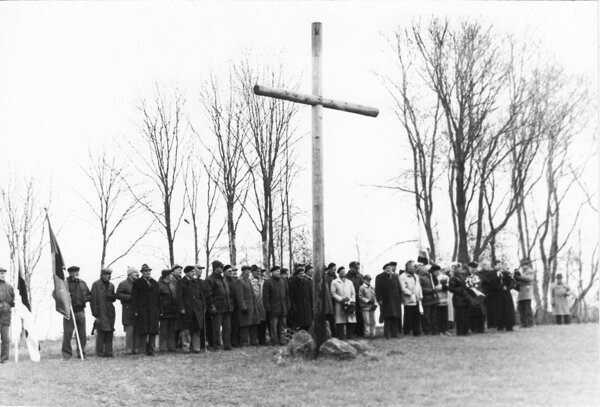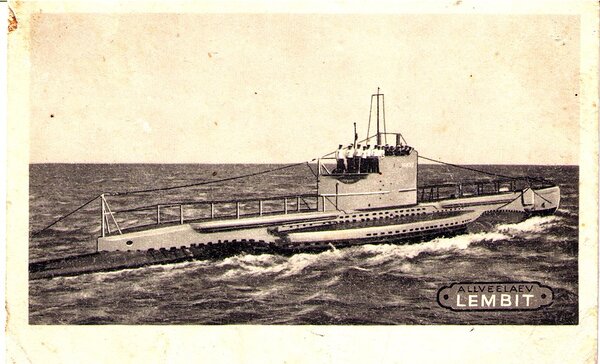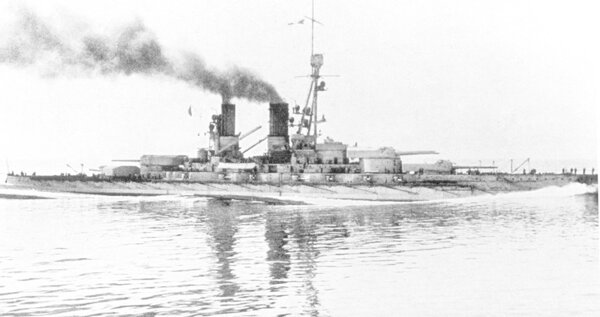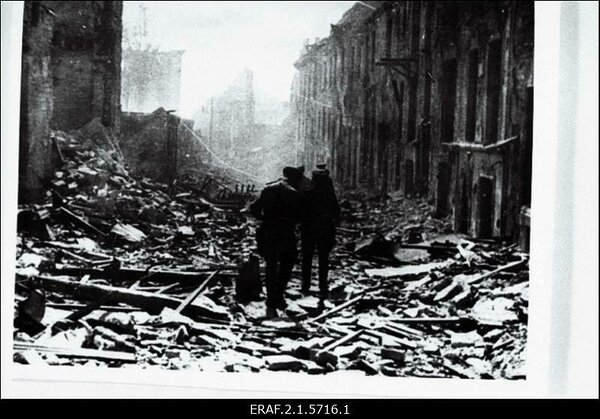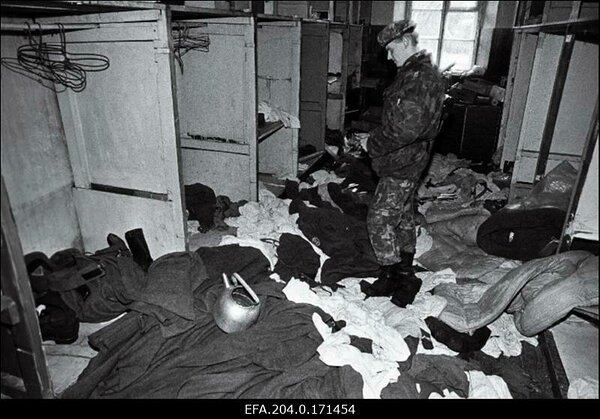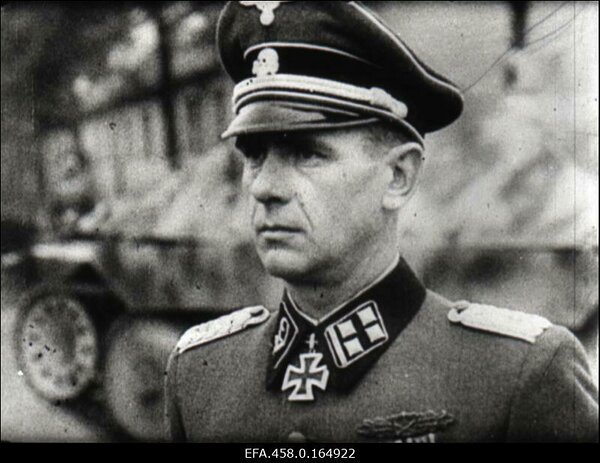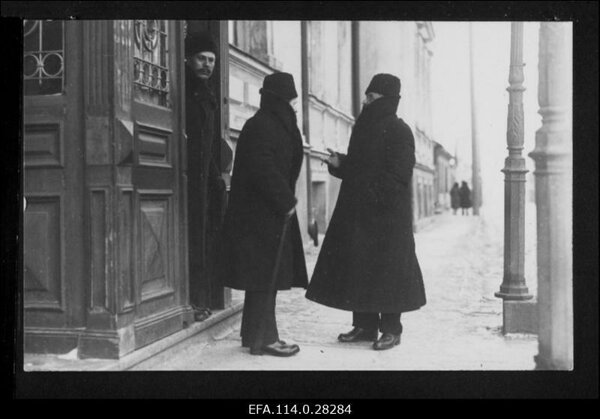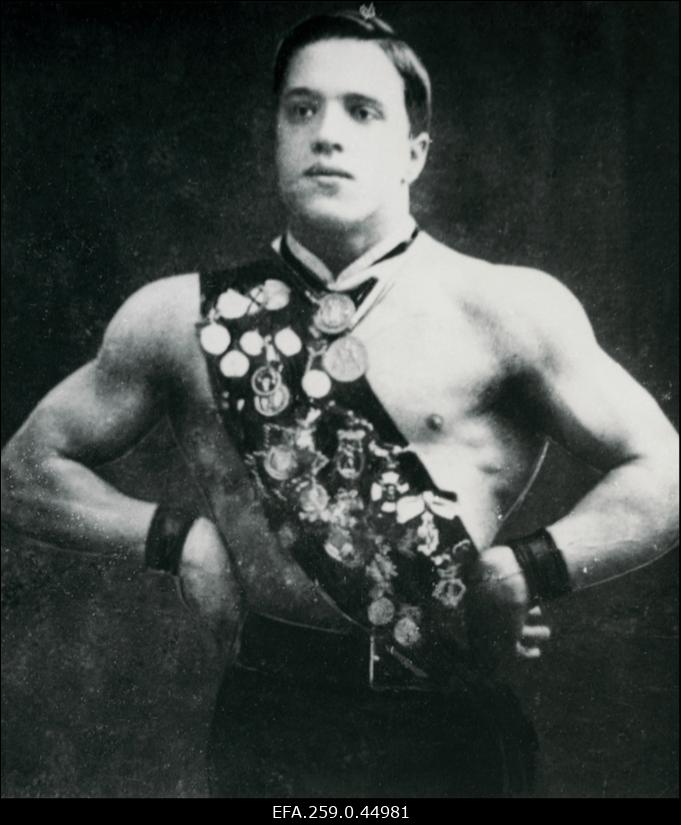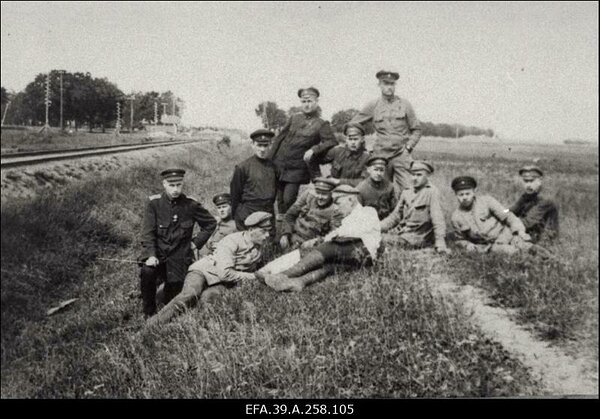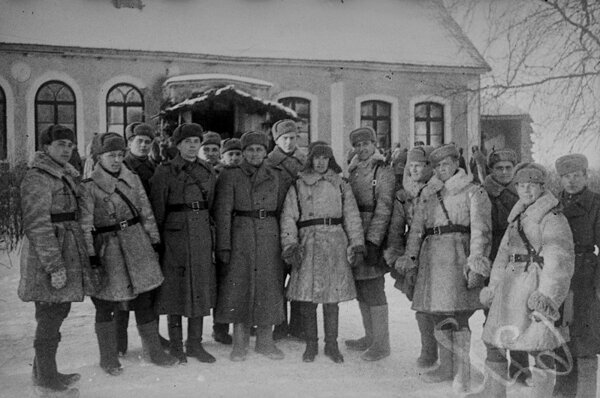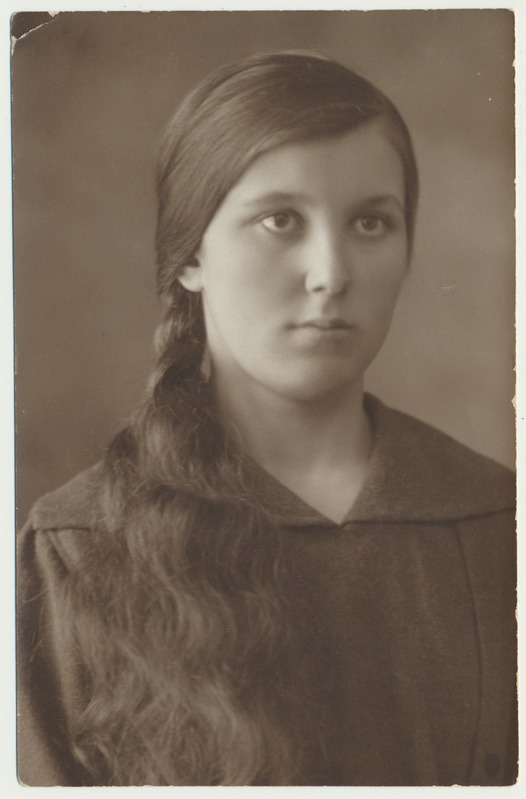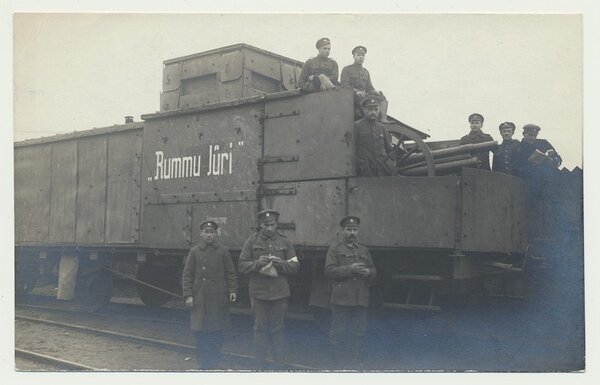Quiz on Estonian military heritage
If you
want to put your knowledge to the test against a friend, choose QUIZ
COMPETITION from the menu: here you have to answer 14 questions in 300 seconds.
You can answer each question only once. If you finish
faster than that and all the answers are correct, the remaining seconds will be
added as a bonus. If you run out of time, you will get points for the correct
answers submitted within the 300 seconds given for answering the questions.
The northern lapwing will cheer for a correct answer
The great reed warbler will crackle if the answer is incorrect.
This webquiz reflects the views of the author. The managing authority of the
programme is not liable for how this information may be used.
This quiz is co-financed by the Estonian-Latvian cross-border cooperation program of the objective "European Territorial Cooperation" of the European Structural and Investment Funds.
During the Estonian War of Independence, an episode took place, in which the main hero Peeter Ronga was awarded the 3rd degree of the Cross of Liberty. What makes Peeter Ronk special about the history of the Estonian War of Independence?
During the Estonian War of Independence, an episode took place, in which the main hero Peeter Ronga was awarded the 3rd degree of the Cross of Liberty. What makes Peeter Ronk special about the history of the Estonian War of Independence?
In Tartu, at the current address of Riga 15b, there is a bigger residential house, which was once called a "grey house". What was this house primarily known for?
In Tartu, at the current address of Riga 15b, there is a bigger residential house, which was once called a "grey house". What was this house primarily known for?
After World War II, the division of Soviet heavy bombers were stationed in Raadi, Tartu, where at some point also nuclear weapons were stored. Who was the Commander of the Air Force Division from 1987 to 1990?
Source: National Archive, https://www.ra.ee
After World War II, the division of Soviet heavy bombers were stationed in Raadi, Tartu, where at some point also nuclear weapons were stored. Who was the Commander of the Air Force Division from 1987 to 1990?
What is the combined name of Tornimägi (Tower´s Hill), Põrguaugumägi (Hellhole´s Hill or Grenader´s Hill) and Pargimägi (Park´s Hill or Orphanage´s Hill) which gained fame in the defensive battles of World War II in Estonia in the summer of 1944.
What is the combined name of Tornimägi (Tower´s Hill), Põrguaugumägi (Hellhole´s Hill or Grenader´s Hill) and Pargimägi (Park´s Hill or Orphanage´s Hill) which gained fame in the defensive battles of World War II in Estonia in the summer of 1944.
The two weapon systems purchased during the most expensive arms procurement in the Republic of Estonia between the world wars were given the ancient names of Estonian men. What were the weapons and what names did they bear?
The two weapon systems purchased during the most expensive arms procurement in the Republic of Estonia between the world wars were given the ancient names of Estonian men. What were the weapons and what names did they bear?
The largest and most successful landing of the German Empire in World War I was called "Operation Albion". What was the purpose and outcome of this operation?
Source: https://www.ra.eeThe largest and most successful landing of the German Empire in World War I was called "Operation Albion". What was the purpose and outcome of this operation?
On March 6, 1944, 200 Soviet bombers dropped nearly 3,600 incendiary and explosive bombs on a single city. In the morning, there was only a smoky pile of ruins left after the city. What Estonian city was it?
On March 6, 1944, 200 Soviet bombers dropped nearly 3,600 incendiary and explosive bombs on a single city. In the morning, there was only a smoky pile of ruins left after the city. What Estonian city was it?
Estonia belonged to the area of the then north-western war theatre of the Soviet Union, which was strongly protected. The 14th Air Defence Division was also located on the territory of Estonia. What was the uniqueness of this division?
Barracks after the departure of the Soviet Forces
Estonia belonged to the area of the then north-western war theatre of the Soviet Union, which was strongly protected. The 14th Air Defence Division was also located on the territory of Estonia. What was the uniqueness of this division?
What common theme connects Estonians Alfons Rebane, Harald Riipalu, Paul Maitla and Harald Nugiseks in World War II?
What common theme connects Estonians Alfons Rebane, Harald Riipalu, Paul Maitla and Harald Nugiseks in World War II?
What psychological method Estonian side used of influencing the Russian delegation during the Tartu peace negotiations?
What psychological method Estonian side used of influencing the Russian delegation during the Tartu peace negotiations?
One of the famous Estonian athletes also had great service record in the War of Independence, where he served both on the armoured train and later with his brothers Felix and Voldemar on the armoured car "Wahur". Who was this man?
One of the famous Estonian athletes also had great service record in the War of Independence, where he served both on the armoured train and later with his brothers Felix and Voldemar on the armoured car "Wahur". Who was this man?
Estonians lost about 2,500 soldiers in the battles of the War of Independence. But how big were the losses of Estonians in World War I?
Estonians lost about 2,500 soldiers in the battles of the War of Independence. But how big were the losses of Estonians in World War I?
The fighting on the Latvian territory during the Estonian War of Independence 19.-23. June 1919, is commonly called the Battle of Võnnu. But what is the Latvian name?
The fighting on the Latvian territory during the Estonian War of Independence 19.-23. June 1919, is commonly called the Battle of Võnnu. But what is the Latvian name?
The last battles of the 8th Estonian Rifle Corps who fought at the Soviet side in World War II were held in Latvia. Where?
The last battles of the 8th Estonian Rifle Corps who fought at the Soviet side in World War II were held in Latvia. Where?
Anna-Marie's heroic deed was described below: “On March 20, 1919, at Munamäe, when the enemy had cut off communication, Peeter Ronk took over. Like a whirlwind he dashed through the enemy lines, bringing the message to the squadron. When he returned with the message, he was confronted by the two mounted Reds who attacked him. Ronk took aim with the rifle and fired at them, after which the riders fled. Ronk managed to keep communication between the 2 squadrons”.
During this period, Soviet security was at the disposal of the entire house. Cells were built in the basement, while the interrogation rooms, premises for officials, and archives were located on the upper floors. The "Grey House" was the Chekist headquarters in Southern Estonia, where mass deportations of population in 1941 and 1949 were organized, among other things. The repressive institution of foreign power operated at this address until 1954 when it was moved, then bearing already the name KGB, to the neighbouring street (Vanemuise 19), to the former building of the Estonian Literary Society. The former house was handed over to the Tartu District Executive Committee, and the basement, which served as a prison, became a repository of archival materials. The Museum of the KGB Cells, part of the Tartu City History Museums, was opened in the former cells in 2001.
It was the legendary Chechen General Dzhokhar Dudayev. His close contact with the social elite and cultural figures during the Estonian political awakening period, his support for Estonia's aspirations for independence, and the mitigation of possible hotbeds of conflict between the military base and the city made him a popular figure. He became the first president of the Chechen Republic of Ichkeria. At the end of the first Chechen war, Dudayev was killed in a rocket attack by Russian military intelligence in 1996.
The defensive battles at Sinimäed took place from July 26 to August 5, 1944, when an attempt was made to obstruct the Soviet Army's grand offensive. They are considered to be the battles with the highest number of casualties on Estonian soil. Due to the large number of Estonian front-line fighters in the battles at Sinimäed, they have become a kind of symbol of Estonia's heroic defence. During the period of July 24-August 7, 1944, the Red Army lost 10-20,000 fighters on the Narva front as dead and missing, in addition to 30,000 wounded. The loss of German forces as dead and wounded amounted to 10,000 soldiers, of whom 3,200 were from Estonian units.
The largest arms procurement in the independent Republic of Estonia was a special order for submarines from England (GBP 360,000), set in motion with the construction contract in 1934. The project proposed by the British company Vickers-Armstrongs turned out to be the most feasible in terms of technicality, price, and payment. The ceremonial launch of the submarines took place on July 7, 1936, in Barrow-in-Furness. Estonian flags were hoisted in the factory building there. The submarines started their way home to Estonia in 1937 - Kalev on May 25 and Lembitu on July 2. The ships arrived on 1 June and 9 July respectively. It is currently possible to see and explore Lembit in Tallinn Seaplane Harbour Museum. Kalev probably sank in the naval battle of 1941.
The German landing took place on October 12-20, 1917. The German fleet consisted of 10 battleships, 9 cruisers, 58 destroyers and 6 submarines. Another 80 minesweepers and almost 100 support ships accompanied the whole flotilla. About 25,000 men, 5,000 horses, 1,400 carts, 150 machine guns, 54 cannons, 12 mortars, 100 planes and airships, equipment for 30 days were gathered in Liepaja to take part in the landing. It was Germany's largest landing operation in World War I. The duration of Operation Albion was less than 10 days. During it, Saaremaa, Muhu and Hiiumaa islands were seized. As it was one of the first modern, logistically, and tactically well-conducted joint operations in the world, the military of many countries uses it in their training programs.
On March 6, 1944, 200 Soviet bombers dropped nearly 3,600 incendiary and explosive bombs on Narva. On the night of March 8, the air strikes started again, and by the morning of March 9, there was only a smoky pile of ruins left of Narva. Historic Narva, along with many cultural and historical buildings, ceased to exist. The bombing, which began on March 6, 1944, was no longer of military importance, as the German army had left the city by that time. Most of the victims of the air raids were civilians. As a result of the bombing, the historic old town of Narva from the second half of the 17th century was destroyed. Of the 3,550 stone buildings in the city, only 198 were later habitable. All the historic buildings were destroyed: the town hall, the ancient stock exchange building, the house for weights and measures, the museum of Peter the Great and many other centuries-old buildings.
The 14th Air Defence Division consisted of Air Defence Missile Force, the Radio Technical Force, the Fighters Air Force, and the rear units. The division was equipped with a modern fire control system and armament, which made it possible to hit airborne targets in border areas from a height of 50 meters to stratospheric heights and several hundred kilometres from the Estonian borders. All combat activities could be managed from the command centre in Pääsküla. As of January 1, 1991, the 14th Air Defence Division´s fighter planes unit had 4 airports – in Haapsalu, Pärnu, Tapa, Rutja (alternate airport); 104 MiG-23M, MiG-23MLD and Mig-23UB aircraft; 10 helicopters Mi-24P; 6646 aircraft missiles (of which 2242 guided and 4404 unguided); 166,569 aircraft cartridges (for machine guns and cannons); 713 tonnes of Air Force engineering equipment.
The Knight's Cross of the Iron Cross (Ritterkreuz des Eisernen Kreuzes) was Germany's highest military award, also awarded to 43 foreigners for their supreme combat bravery in World War II. Among the 438 Knight's Cross bearers in the Waffen SS were 29 European volunteers, including Alfons Rebane, Harald Nugiseks, Paul Maitla and Harald Riipalu. These men are the highest awarded Estonian soldiers in World War II. Only two foreigners who served in the Waffen SS earned the Knight's Cross with Golden Oak Leaves (Ritterkreuz des Eisernen Kreuzes mit Eichenlaub): Alfons Rebane and Leon Degrelle, the leader of the Walloons who fought in Estonia.
Estonian soldiers were made to march around the city in circle, as the border negotiations did not go well and the parties maintained their demands. The idea, consequently, was to create the impression and scare the other side that Estonia still has quite a few soldiers. Thus, one day, the commander of the 2nd Division, Colonel Viktor Puskar, ordered the Tartu School Students' Battalion to march around the locations of the Russian delegation. The battalion consisted of up to 800 men, with rifles, machine guns and an orchestra. The whole "information operation" lasted 3 hours.
In 1920, Estonia won its first Olympic gold medal at the Antwerp Summer Olympics. Alfred Neuland won the gold medal in weightlifting. He also participated in the Paris Summer Olympics in 1924, where he won a silver medal in weightlifting, being the first two-time Olympic medal winner in Estonia. Neuland did not start doing sports until 1919, having become the Estonian champion for the first time before that.
In 1914, more than 17,600 reservists, 3,500 recruits and nearly 14,500 members of the Territorial Defence Forces were recruited from Estonia for military service. Thus, in the first year of the war, more than 35,500 men, or at least 7% of the total male population, were recruited from Estonia. In total, approximately 100,000 men were recruited from Estonia during World War I, of whom more than 10,000 died or went missing.
During the series of battles in June 1919, Estonian troops beat a German army group under Major General Rüdiger von der Goltz, based in Latvia, which included many representatives of the Baltic German nobility from Latvia and Estonia. As a result of the armed conflict that ended in the defeat of the Landeswehr, the government of Kārlis Ulmanis came to power in Latvia, and Estonia secured a friendly Republic of Latvia on its southern border. June 23 has been celebrated as Victory Day in Estonia since 1934.
The 8th Estonian Rifle Corps consisted of Estonians forcibly mobilized in Estonia and taken to Russia in 1941, members of extermination battalions formed in Estonia, Estonians living in the USSR before World War II and the former officers of the Estonian Army and Red Army. From March 17 to May 1945, the Estonian Rifle Corps fought against the German army group Nord in Kurzeme. After that, the unit did not continue fighting the war as the Red Army group in Kurzeme did not undertake any major attacks. In 1946, the unit was reorganized and ceased to exist.



